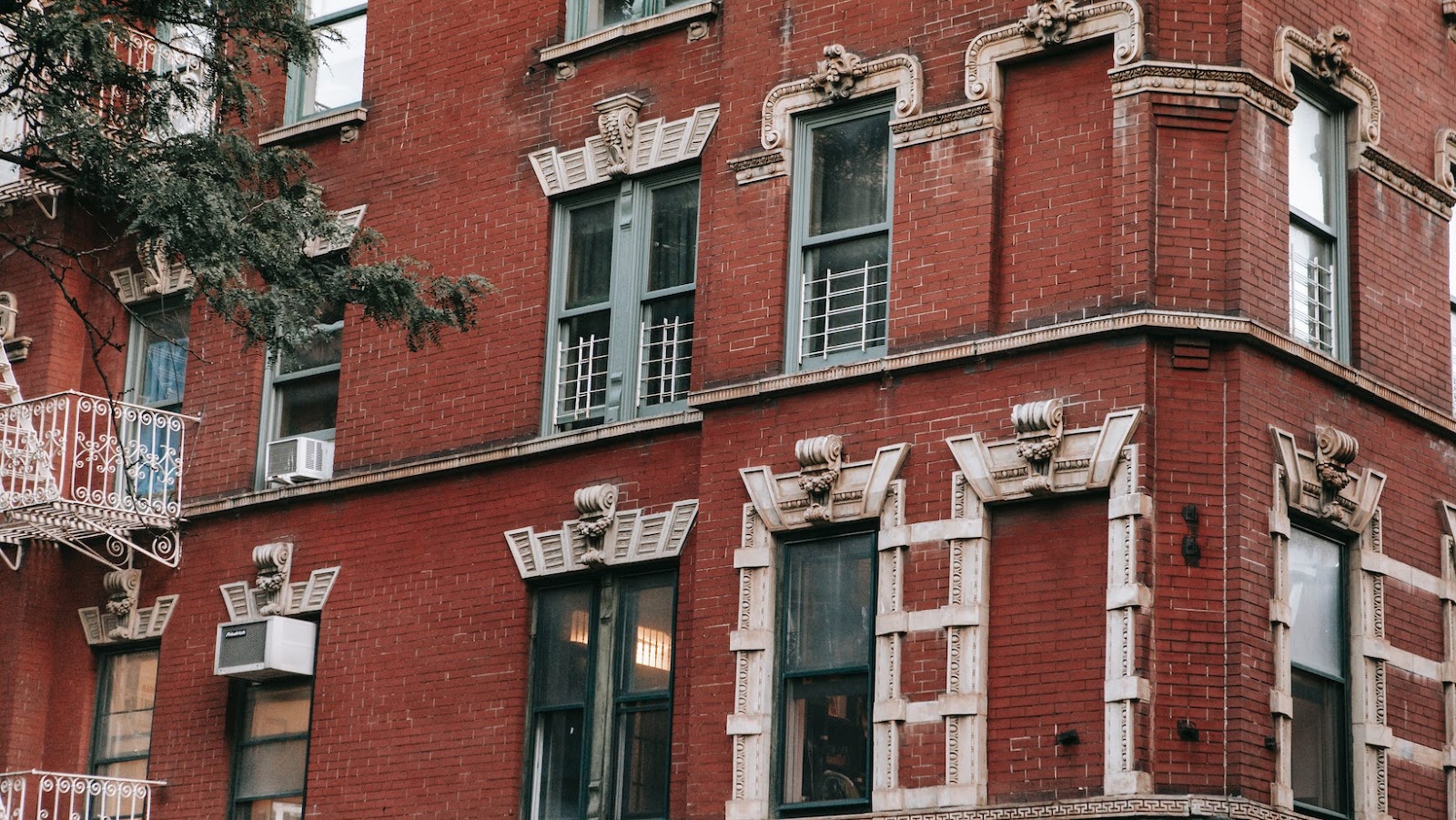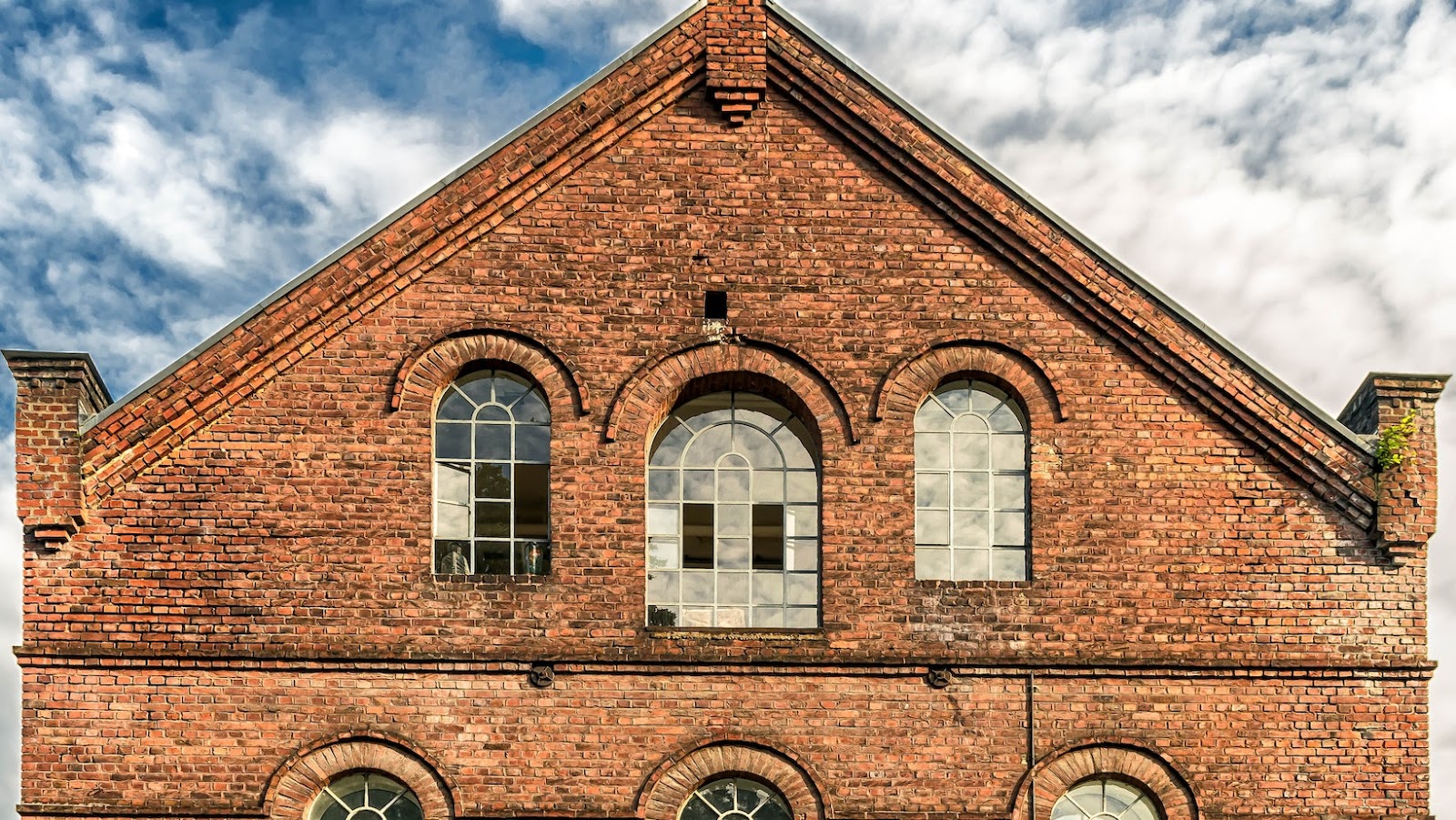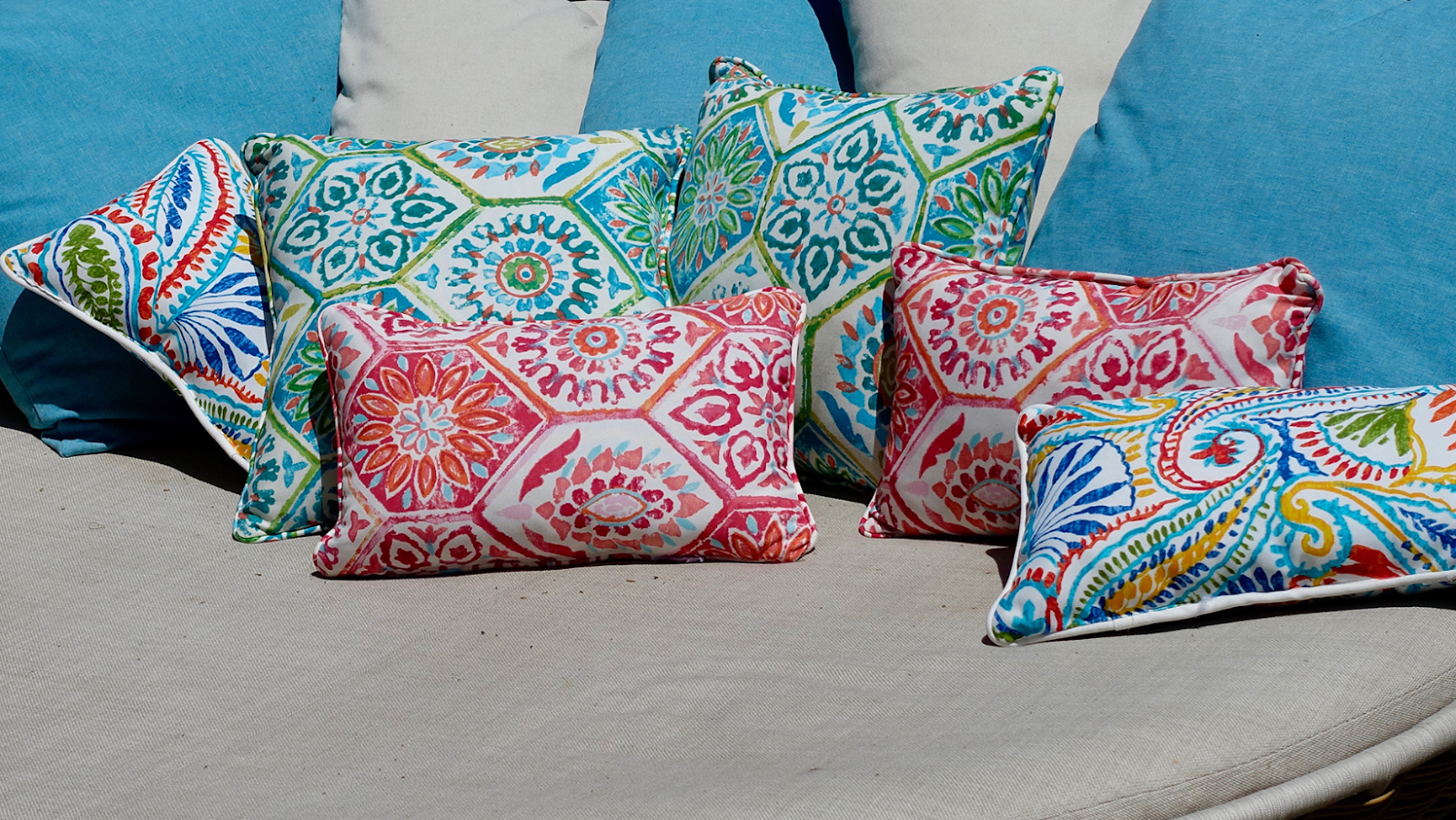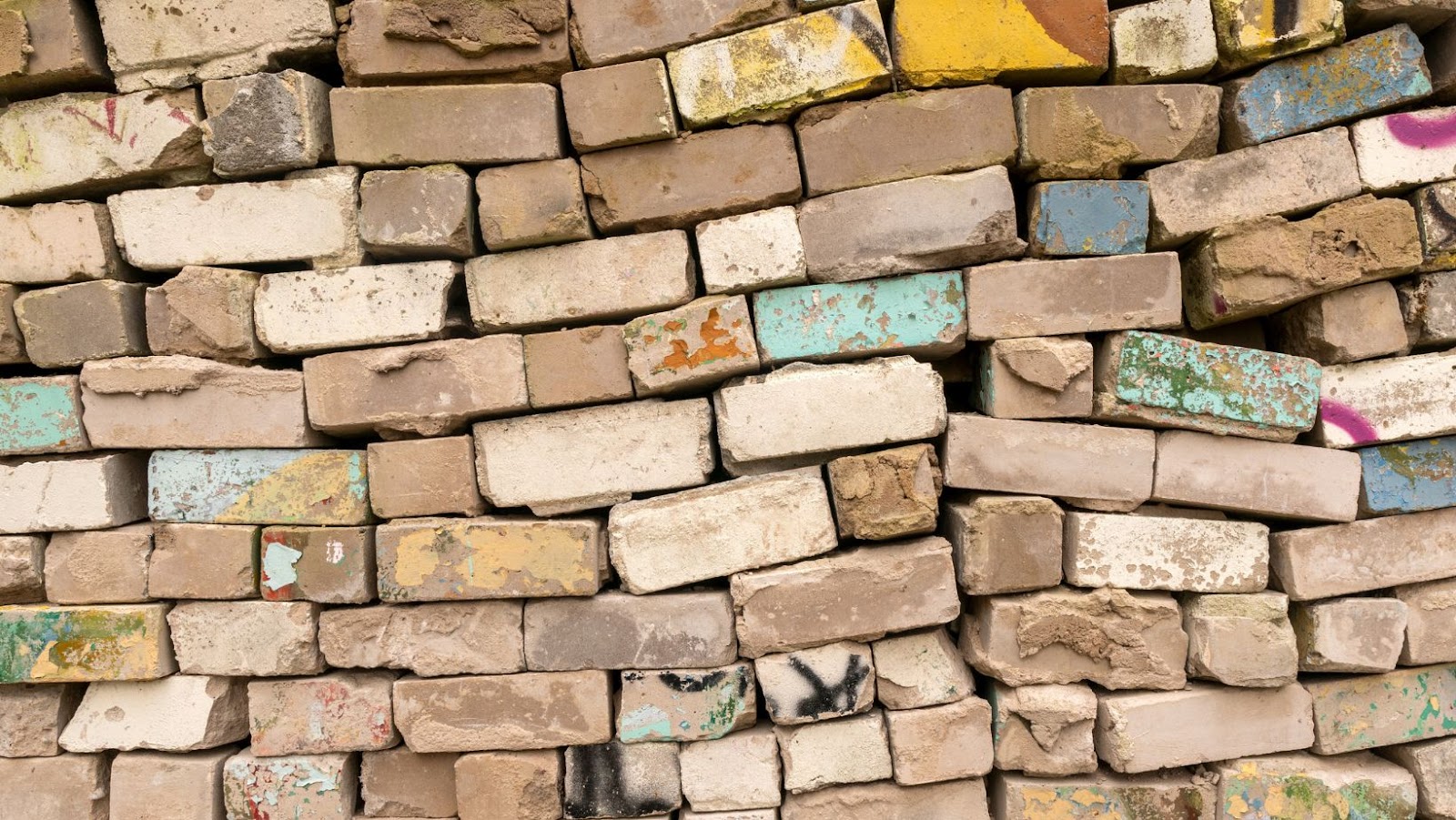Disadvantages of Brick Veneer Construction

Brick veneer construction has significant disadvantages compared to full brick constructions, and it is essential to know the differences between the two types of structures to make informed decisions when investing in your home’s construction or renovation.
How to Tell Between Brick Veneer And Full Brick Construction
- Moisture penetration: Brick veneer walls are more susceptible to moisture penetration than full brick walls, leading to moisture damage, dampness, and mould growth.
- Energy efficiency: Brick veneer walls offer less insolation than full brick walls, decreasing energy efficiency and requiring more energy for temperature regulation.
- Higher cost: Brick veneer construction’s initial cost may be lower than full brick construction, but it requires additional layers of insulation, wall ties, and waterproofing materials, increasing the overall cost.
To tell the difference between brick veneer and full brick construction, look for the following:
- Brick veneer construction: The interior walls are framed with wood, and the bricklayers cover the exterior.
- Full brick construction: Both the interior and exterior walls consist of layers of bricks, giving the structure a solid feel.
Pro tip: Consult with an expert or engineer to determine which construction type is best suited for your specific needs and weather conditions.
Understanding Brick Veneer And Full Brick Construction
Brick veneer and full brick construction are two different types of building techniques and the distinction between them is quite important. Constructing with brick veneer involves adding a layer of brick to the outer wall of a building, while full brick construction involves using brick to make the entire wall, from the outer surface to the inner surface.
It is important to understand the differences between these two building techniques, as well as their advantages and disadvantages. This article will provide an overview of brick veneer construction, full brick construction, and the advantages and disadvantages of each.
What is Brick Veneer Construction?
Brick veneer construction is a method of building structures that involves using a thin layer of bricks on the exterior wall surface to provide an aesthetically pleasing finish. This technique involves construction of an inner timber frame, on which a non-structural outer layer of bricks is laid, leaving a gap between the two layers.
It is possible to distinguish brick veneer construction from full brick construction in a number of ways. Firstly, brick veneer has a thin layer of brick on the exterior wall. Secondly, brick veneer construction has a gap between the brick and the inner frame, while full brick construction has no such gap. Lastly, the thickness of the exterior wall in a brick veneer construction is lesser than that in a full brick construction.
Despite its aesthetic appeal and ease of construction, brick veneer construction has a few disadvantages which include moisture infiltration through cavity walls and limited ability to bear weight.
What is Full Brick Construction?
Full brick construction is a construction method in which the entire load-bearing structure of the house is made of brick, including exterior and interior walls. Brick veneer construction, on the other hand, involves a layer of bricks over a timber frame, with most of the weight of the building being borne by the frame.
It is relatively easy to tell between the two types of construction. In full brick construction, the thickness of the wall is uniform throughout the house, usually between 220 mm to 290 mm. In brick veneer construction, the exterior walls are usually only one layer of bricks thick (around 100mm), while the interior walls are made of timber or plasterboard.

While brick veneer construction is less expensive than full brick construction, it has some disadvantages. Brick veneer buildings may not be as sturdy as full brick buildings, have a shorter lifespan, and can be more susceptible to structural issues such as cracking, movement, and moisture penetration. Full brick construction, on the other hand, offers better insulation, durability, and protection from the elements.
Pro Tip: While brick veneer buildings are more common, full brick construction is becoming increasingly popular due to its sturdiness and durability.
How to Tell The Difference Between Brick Veneer And Full Brick Construction
One way to distinguish between brick veneer and full brick construction is to examine the thickness of the wall.
A full brick wall consists entirely of bricks and may be anywhere from 4 to 12 inches thick. On the other hand, brick veneer is only one layer of bricks that are attached to a framing structure. It is typically only 1 inch thick and is not designed to bear weight. Another way to identify brick veneer is to look for a gap or space between the outer layer of bricks and the wall of the house. This gap is designed to allow for air circulation and drainage behind the brick veneer. Additionally, tapping on the surface of the brick can also help identify a veneer wall, as the sound produced will be hollower and more shallow than that of a full brick wall.
While brick veneer is more cost-effective than full brick construction, it comes with certain disadvantages, such as susceptibility to moisture damage, lower fire resistance, and a shorter lifespan.
The Disadvantages of Brick Veneer Construction
Brick veneer construction is the process of attaching a thin layer of brick to the external walls of a structure. It is often used to create a more aesthetically pleasing look for a building since it has a classic and timeless appearance.
While it may look aesthetically pleasing, there are some drawbacks of brick veneer construction that should be taken into consideration when deciding whether or not it is the right construction method for you.
In this article, we will discuss the potential disadvantages of brick veneer construction.
Moisture And Water Damage
Moisture and water damage is a common disadvantage of brick veneer construction in comparison to full brick construction. Brick veneer is a method used to mimic the look of full brick construction, but with a more lightweight and cost-effective solution. However, it comes with its own set of drawbacks. One of the major disadvantages is the vulnerability to moisture and water damage. Because of the air gap between the exterior brick veneer and the interior walls, moisture and water can seep into the veneer and become trapped, causing damage to the interior walls and structure. This can lead to mould growth, rotting of wooden frames, and decreased energy efficiency. To tell the difference between full brick and brick veneer construction, you can examine the exterior walls. Full brick construction will have walls that are entirely made up of bricks, while brick veneer construction will have a thin layer of bricks on the exterior surface, with a gap between the interior walls and exterior bricks.
It is important to take preventative measures such as proper waterproofing and maintenance to avoid moisture and water damage to your brick veneer construction.
Difficulty With Insulation And Energy Efficiency
Brick veneer construction can pose significant difficulties with insulation and energy efficiency in your home, making it a less desirable choice compared to full brick construction. One of the disadvantages of brick veneer construction is that it lacks the insulating properties of full brick, which means that a separate insulation layer must be installed. The resulting air gap between the veneer and insulation can lead to thermal bridging, which allows heat to escape during winter and enter during summer, reducing energy efficiency.
In addition, the porous nature of brick veneer can make it prone to leakage, leading to moisture damage and mould growth. To identify if a construction is a brick veneer or full brick, tap the structure’s exterior, as the sound will differ due to the air gap between the brick veneer and framing.
Pro tip – Consider full brick construction over brick veneer to ensure better insulation and energy efficiency in your home.
Repair And Maintenance Costs
One of the main disadvantages of brick veneer construction is the repair and maintenance costs associated with it.
Brick veneer construction involves an outer layer of bricks that are attached to a wood-framed structure through metal ties. This type of construction can lead to several issues and additional costs over time. For instance, the metal ties used to attach the brick veneer to the frame can corrode and rust, leading to structural issues and the need for repairs. In addition, the mortar between the bricks can crack and degrade over time, which can cause water to seep behind the veneer and damage the wood framing underneath. If you are unsure whether your home is constructed with full brick or brick veneer, there are a few ways to tell. One way is to look for a weep hole between the bottom brick and the foundation, which is typically present in brick veneer construction. Another way is to measure the thickness of the wall; full brick is typically 4 inches thick, while brick veneer is only 1 inch thick.
To reduce repair and maintenance costs in brick veneer construction, it is crucial to ensure proper installation and regular inspections to detect any issues early on.
Susceptibility to Pests And Rot
One of the major disadvantages of brick veneer construction is its susceptibility to pests and rot due to the air gap between the brick veneer and the wall sheathing.
Unlike full brick construction, which is a solid brick wall, brick veneer construction uses a thin layer of brick that is installed over a moisture-resistant barrier and a frame of wood or metal studs. This design creates an air gap that can trap moisture and provide a habitat for pests.
The best way to tell if a wall is made of brick veneer or full brick construction is to look at the thickness of the wall. A full brick wall will be at least one full brick thick, while a brick veneer wall will be much thinner, with a visible gap between the bricks and the framing. If you are unsure, consult a professional before attempting to make any modifications to the wall.
Pro Tip: Regular maintenance and inspection can help identify pest or rot infestations early on and prevent further damage to your brick veneer construction.
Alternatives to Brick Veneer Construction
Brick veneer construction is an effective way to create a durable and aesthetically pleasing structure. However, it does come with some drawbacks that should be considered before deciding on the material for a construction project.
This article will discuss some of the alternatives to using brick veneer in construction and how to determine the difference between brick veneer and full brick construction.
Fiber Cement Siding
Fibre cement siding is a popular alternative to brick veneer construction due to its durability, low maintenance, and affordability. This type of siding closely mimics the look and texture of natural wood and is available in a variety of colours and styles. Unlike traditional brick veneer, fibre cement is resistant to water, rot, and insect damage, making it an ideal choice for homeowners living in areas with harsh weather conditions. Additionally, fibre cement siding is fire-resistant and is a great way to add an extra layer of protection to your home.
To distinguish between brick veneer and full brick construction, look for a repeating pattern in the brickwork. Full brick walls will have evenly spaced, full-size bricks. In contrast, brick veneer walls will have a repeating pattern of full-size bricks and smaller, decorative brick pieces.
Stucco
Stucco is a popular alternative to brick veneer construction, which has a few disadvantages. One such disadvantage is the difficulty of distinguishing brick veneer from full brick construction.
Here are a few tips to help you identify the difference:
Look closely at the exterior walls of the building. If the brick pattern is consistent throughout and each brick is whole and continuous, it is likely full brick construction.
If the building exterior shows some signs of weathering, chipping or cracking, it is likely brick veneer construction over a substrate such as concrete blocks or wood framing.
Knock on the wall lightly. A solid brick wall produces a solid sound, while a brick veneer construction will sound hollow due to the cavity behind the brick.
In comparison to Brick veneer, Stucco is a weather-resistant, low-maintenance option which requires less labour and can be applied to a variety of surfaces.
Choosing the right construction material will ensure the longevity, safety, and aesthetic appeal of your building.
Engineered Wood
Engineered wood is a popular alternative to brick veneer construction for homeowners who want the look of natural wood without the maintenance. Engineered wood is made by combining different types of wood fibres and adhesives to create a strong, durable product that can withstand moisture, insects, and other environmental factors. It comes in a variety of colours, styles, and textures, making it easy to match your home’s aesthetic.
When it comes to distinguishing between brick veneer and full brick construction, look for the following clues: Brick veneer has a thin layer of brick attached to a frame or support structure, while full brick construction is made entirely of bricks. If you can see the thickness of the bricks on the exterior of the wall, it’s likely to be full brick construction. If the wall appears to be relatively thin, it’s probably brick veneer.

Keep in mind that brick veneer is less expensive and faster to install than full brick construction, but it can be more prone to moisture damage over time.
Pro tip: If you’re unsure whether your home has brick veneer or full brick construction, consult a professional contractor or home inspector to help you determine the best course of action for your home renovation needs.
Making The Right Choice For Your Home
When it comes to building and renovating your home, it is important to make sure that you understand the differences between brick and veneer construction. Knowing the pros and cons of each will help you make the right choice for your home, both aesthetically and financially. In this article, we will discuss the disadvantage of choosing brick veneer construction for your home and how to determine the difference between veneer and full brick.
Consider Your Climate
If you are considering building your home, it is necessary to choose a construction material appropriate for your climate. Although brick veneer is an attractive and cost-effective option, it is not suitable for some regions due to its disadvantages compared to full brick construction.To tell if your home is built with brick veneer or full brick, follow these steps:
Check for a gap between the brick exterior and the interior wall. If there is a gap, it is likely brick veneer.Examine the thickness of the exterior wall. Full brick walls are thicker than brick veneer walls. Tap on the wall with a knuckle. A brick wall will produce a deep, solid sound, while a brick veneer wall will produce a hollow sound due to the gap between the brick exterior and the interior wall.Keep in mind, brick veneer is less durable and provides less insolation than full brick construction. It may not be ideal for regions with extreme temperatures or high precipitation.
Pro tip: Consult your builder or contractor to determine the best construction material for your climate and region.
Assess Your Budget
Before making any decision between brick veneer and full brick construction, it is crucial to assess your budget, as there are potential disadvantages to brick veneer that may require additional expenses down the line.
Brick veneer is a thinner layer of brick that is added to the outside of a home’s structure, with a cavity or airspace between the brick and the wall. This is different from full brick construction, where the walls are entirely made of brick. One obvious disadvantage of brick veneer is that it can be difficult to determine whether a home is full brick or brick veneer construction without professional inspection. Other disadvantages include the need for additional insulation, potential water damage from inadequate drainage systems, and higher susceptibility to damage from earthquakes or other natural disasters.
Therefore, it is essential to consider your budget and long-term expectations for your home before making a decision between brick veneer and full brick construction.
Pro tip: Always hire a professional inspector or contractor to assess the construction of your home before making any significant purchases or renovations.
Think About Long-Term Maintenance
When choosing brick as the building material for your home, it’s crucial to think about long-term maintenance requirements. Brick veneer construction, while it looks similar to full brick construction, has some significant disadvantages that you need to consider before making a decision about which one to choose.
Here are some ways to tell the difference between brick veneer and full brick construction:
- Look at the thickness of the walls. Full brick walls are typically around 4 inches thick, while brick veneer walls are only around 1 inch thick.
- Check the corners of the walls. Full brick walls have brick corners, while brick veneer walls have metal flashing or other materials at the corners.
- Look for weep holes. These small holes are placed in the bottom row of brickwork to allow moisture to escape. They are present in brick veneer walls but not in full brick walls.
When it comes to maintenance, brick veneer construction requires periodic inspection and repair of the metal flashing to prevent water damage. Full brick construction, on the other hand, is low-maintenance and has a longer lifespan.
Consult With a Professional
When it comes to determining the difference between brick veneer and full brick construction, it can be difficult to tell without the help of a professional. Consulting with a professional can point out the disadvantages of brick veneer and help you make the right choice for your home construction.
A few disadvantages of brick veneer construction are:
- It has a lower resale value compared to full brick construction.
- Veneer is prone to water damage and may cause rot or mould.
- Veneer needs regular maintenance for longevity, whereas full brickwork can last for many years with little upkeep.
A professional can guide you and show the relative look and feel of the exteriors of both constructions, aiding you in making an informed decision about what is suitable for your home.

 The Benefits Of Outdoor Sofa Deep Seating
The Benefits Of Outdoor Sofa Deep Seating  This Method has Been Used for Centuries
This Method has Been Used for Centuries  The Different Types of Bonds
The Different Types of Bonds  Solar Panel Cost And Efficiency
Solar Panel Cost And Efficiency  The Most Comfortable Deep Seating Outdoor Furniture
The Most Comfortable Deep Seating Outdoor Furniture  Maintaining Your Glass Cabinet Doors
Maintaining Your Glass Cabinet Doors